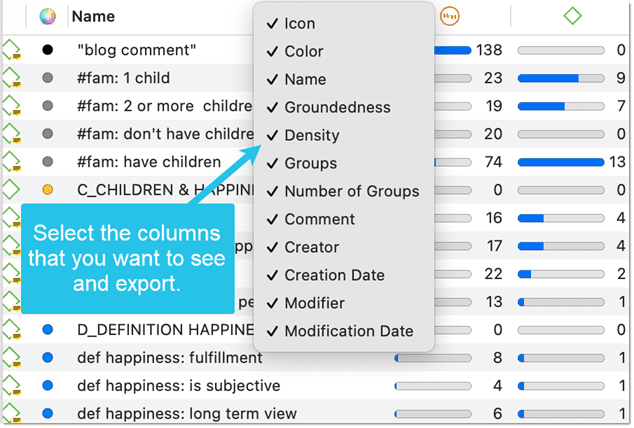Working with Codes
Video Tutorial: Coding Data
Modifying the Length of a Coded Segment
Select the quotation by clicking on the quotation bar or code in the margin area. Then move the handle in form of a blue line and dot to the right, to the left, or up or down, depending on whether you want to shorten or lengthen the quotation.

Removing a Coding
This option is the reverse function of coding. It removes the links between codes and quotations. Unlike the delete function, neither codes nor quotations are removed; only the association between the code, and the quotation is removed.
Removing a Coding in the Margin Area
Right-click on the code in the margin area and select the option Unlink from the context menu.
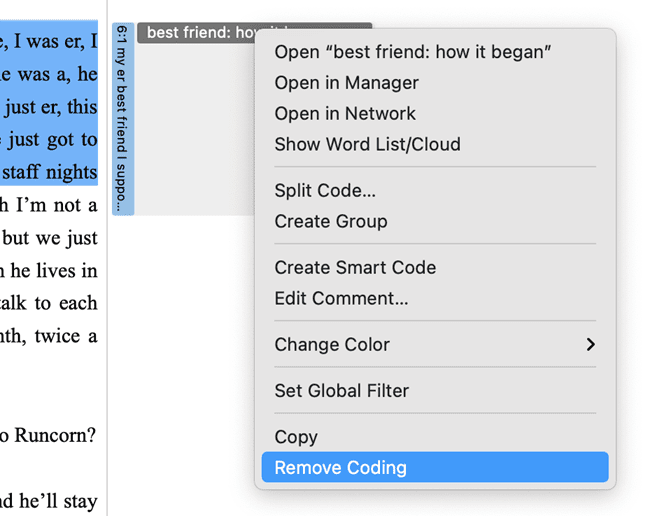
Removing a Coding in the Coding Dialogue
Double-click on quotation in the margin area. This opens the Coding Dialogue. Click on Applied Codes to quickly see which codes have been applied to the quotation. Click on the button with the minus (-) to remove a code.

Replacing a Code via Drag & Drop
If you want to replace a code that is linked to a data segment, you can drag and drop another code on top of it. This can be done from either the Project Explorer, Code Browser, or the Code Manager. When you drop it on top of another code, select the second option from the context menu: Replace ... with ...
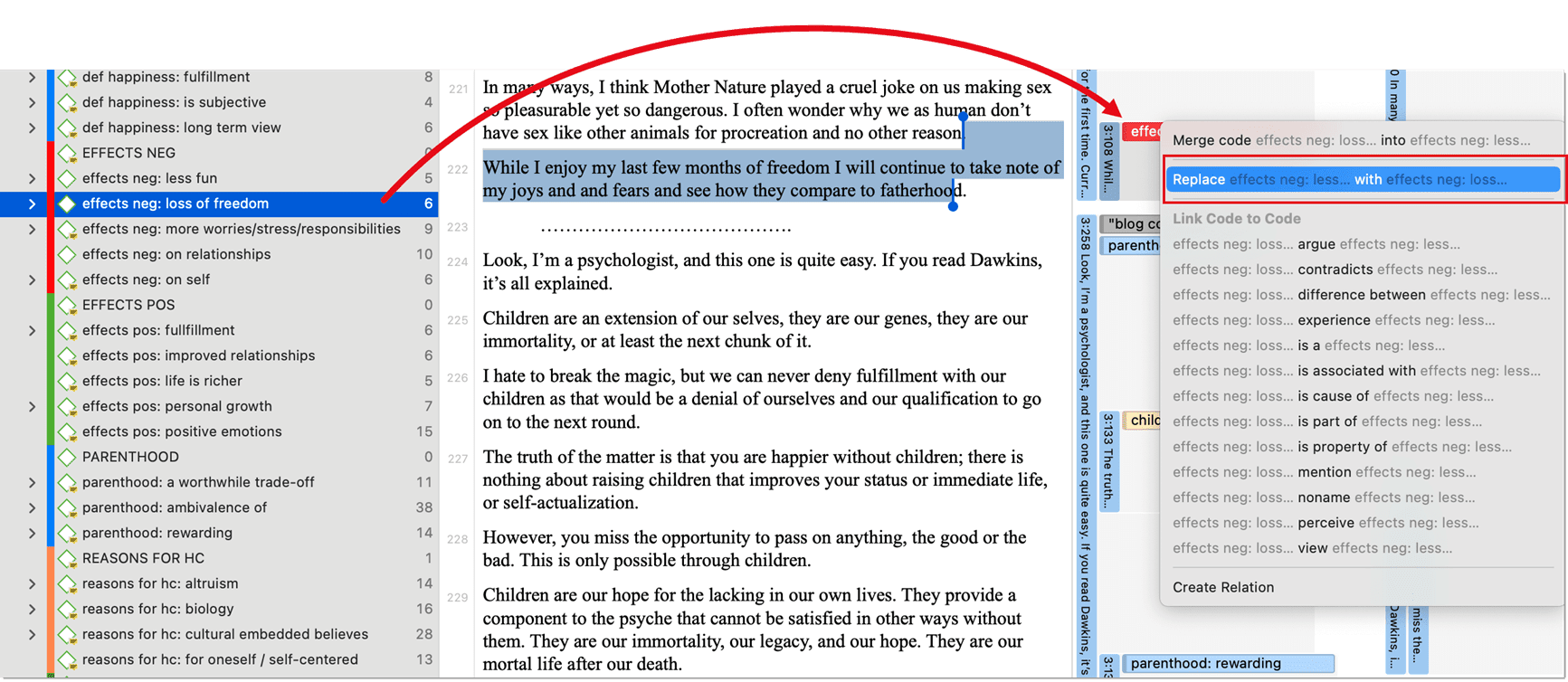
Adding, Changing and Removing Code Color
In the Project Explorer, Code Browser, Code Manager, or in a Network right click and select the option Change Color from the context menu.
In the Code Manager or Inspector, select a code and click on the circle.

In the image above on the left-hand side you see the default colors. This is a selection of colors from a color palette, which is suitable also for colorblind people. In the code list on the right-hand side, you see additional colors. Additional colors can be added if you import a list of codes from Excel. See Importing code lists.
Renaming a Code
You can left-click on a code anywhere to rename a code in in-place edit mode. Another option is to rename the code in the inspector.
Deleting One or Multiple Code(s)
In the Project Explorer, the Code Browser, or Code Manager, right-click on a code and select Delete. To select multiple codes, hold down the command key.

About Renaming, Deleting and Unlinking Codes
Renaming and deleting codes are procedures that seem trivial, but understanding the scope of these operations can be a problem for new users. For both operations you must understand, that there is only ONE code, for example 'source of happiness: children' in a given project, even if you applied this code many times.
In the margin are, you may see the code appear many times while scrolling through your document. In fact, you are seeing the codings for this code. Technically speaking, these are links between a quotation represented by a blue bar and the code, represented by its name and icon.
Removing a coding in the margin area (i.e., unlinking the code) is like erasing a word in the margin of a paper document with an eraser. It only affects one coding, i.e., one specific occurrence of the code. All other occurrences of the same code are untouched. The effect of the operation is local.
By renaming or removing a code from a project, you are affecting every occurrence of the code throughout the entire project. The effect is global. Renaming the code will instantly change all the code links in the margin to reflect the new name. Deleting it will remove all occurrences in the margin (and from all other contexts in which it was engaged, like networks, groups, etc.).
Duplicating a Code
It is also possible to duplicate codes with all its linkages. The duplicated code is a perfect clone of the original code including color, comment, code-quotation links, code memo links and code-code links. Duplicating a code can be a useful option to clean up or modify a code system.
To duplicate a code, right-click on a code in the Project Explorer, Code Browser or Code Manager and select Duplicate.
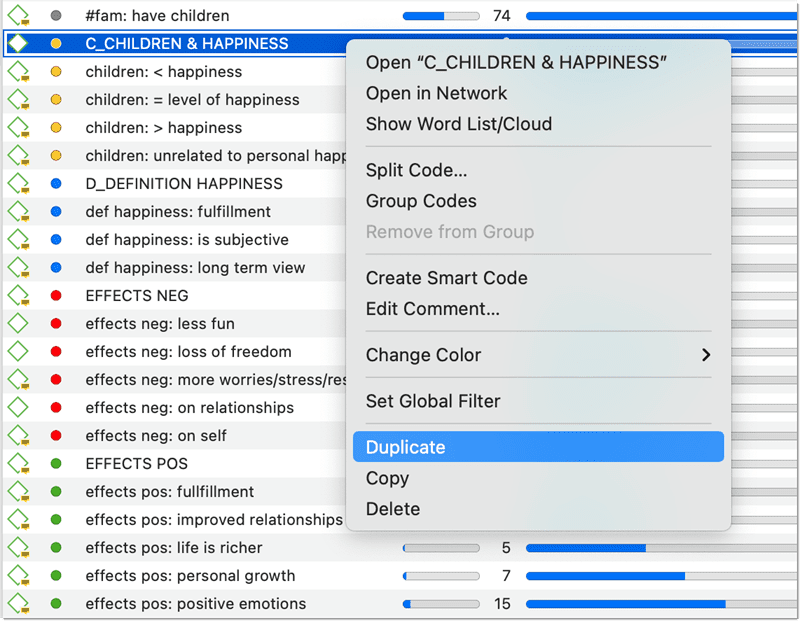
Writing Code Comments
Code comments can be used for various types of purposes. The most common usage is to use them for a code definition. If you work in teams, you may also want to add a coding rule, or an example quote. If you work inductively, you can use code comments to write down first ideas of how you want to apply this code. You can also use it to write up summaries of all segments coded with this code and your interpretation about it. There are several ways to write a code comment.
-
If you select a code anywhere, you can write a code comment in the inspector.
-
In the margin area, you can double-click on a code to open the comment editor. Another option is to right-click on a code and select the Edit Comment option from the context menu.
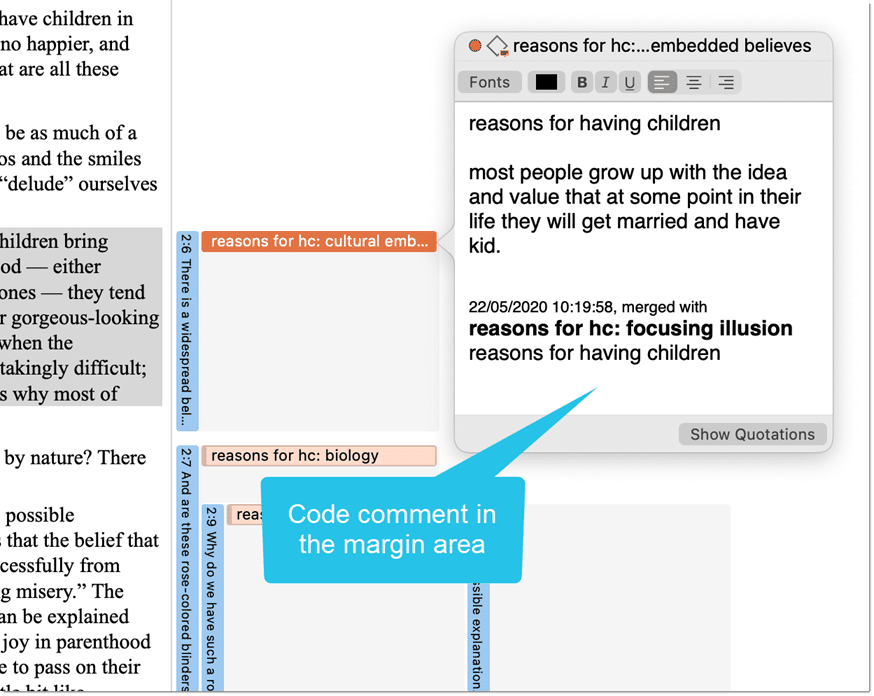
All codes that have a comment shows a little yellow flag.
All codes that have a comment shows a little yellow flag.
Creating a Code Book
The recommended option to create a code book is to use the Excel export option in the Code Manager:
Open the Code Manager, select all codes (e.g., Cmd+A), click on the Export button and select Export as Spreadsheet.
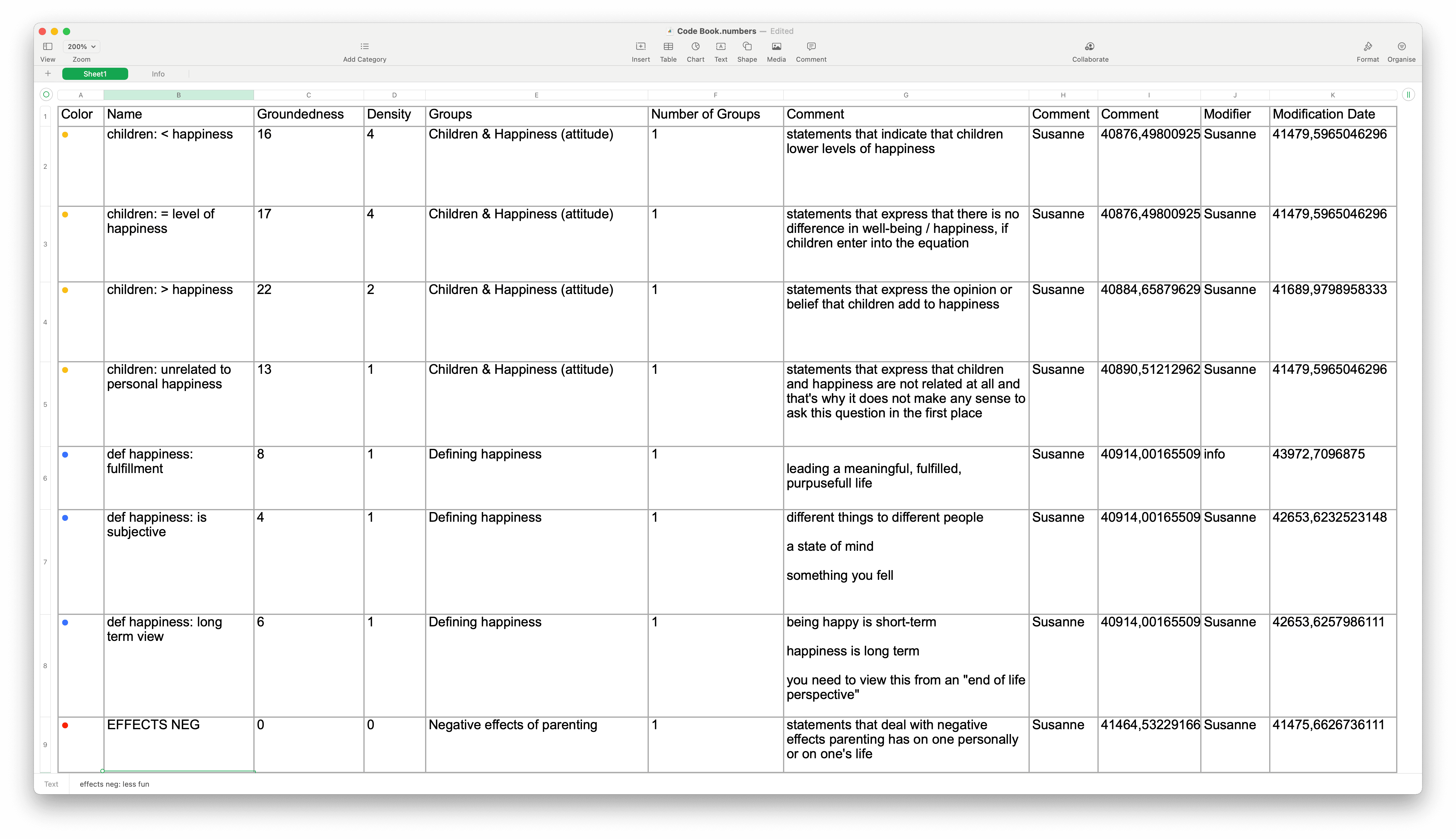
ATLAS.ti exports are columns that are visible in the Code Manager. If you click on a column header, you can deselect columns that you do not want to export.
